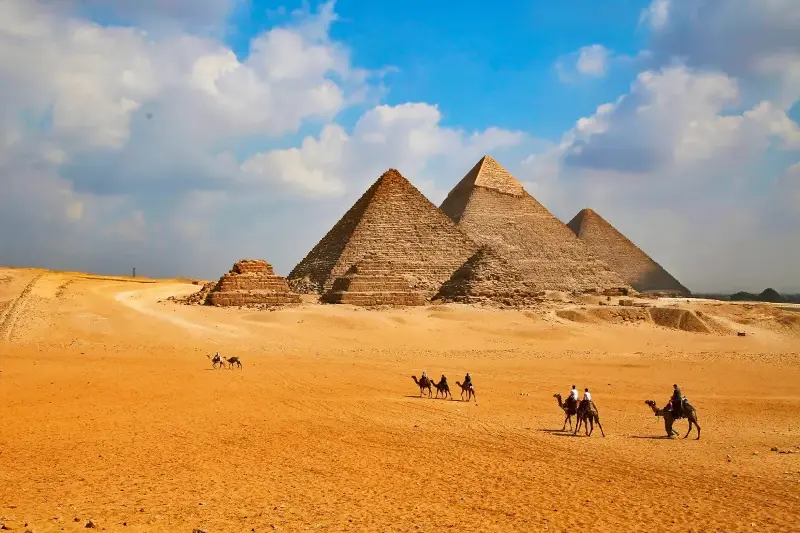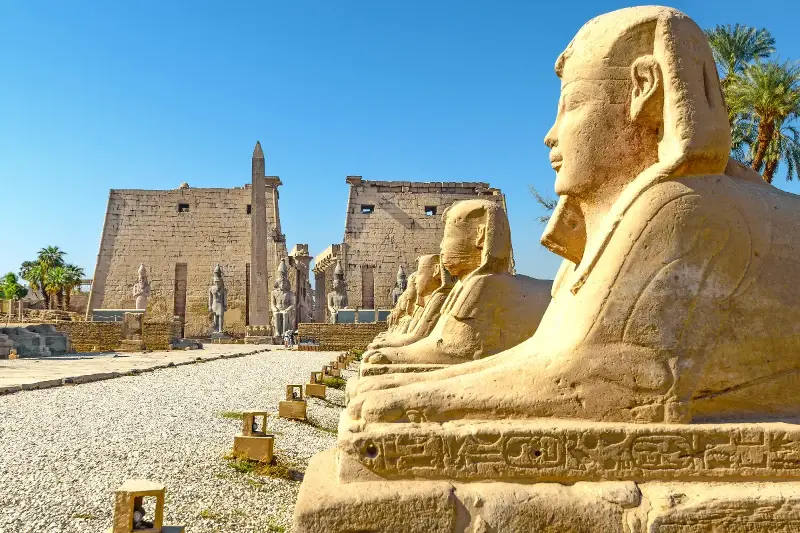Nothing quite compares to the stirring sight of the great pyramids of Giza. Towering against the Egyptian sky, these stone marvels have defied millennia, standing as solemn witnesses to humanity’s thirst for the extraordinary. Constructed over 4,500 years ago during the Old Kingdom, the pyramids—Khufu, Khafre, and Menkaure—were built as monumental tombs for pharaohs, demonstrating a formidable command of mathematics, astronomy, and engineering.

Rising From the Sands: Giza’s Eternal Pyramids
Imagine the sweat and hope of thousands of workers, artisans, and architects, all driven by reverence for their kings and the gods they believed would receive them in the afterlife. The Great Pyramid of Khufu alone comprises over two million limestone blocks, each meticulously placed—some weighing as much as an elephant. For centuries, scholars have debated the methods and motivations behind their construction, sparking a sense of wonder across global classrooms.
The site stirs powerful emotions: awe at human ingenuity, humility before time’s relentless march, and curiosity about mysteries still untold. When you stand beneath the shadow of these giants, you feel intimately connected not just to Egypt, but to a universal desire to endure and be remembered.
Giza’s Hidden Layers: What Lies Beneath?
Beneath the surface lies a labyrinthine network of chambers, shafts, and passageways. While the pyramids’ exteriors are iconic, their interiors tell a quieter story of rites, rituals, and the Egyptian soul’s spiritual journey beyond the grave.
- The so-called “air shafts” may have astronomical or symbolic roles, potentially aligned with stars linked to Egyptian mythology.
- Original limestone casings would have made the pyramids gleam dazzling white, reflecting sunlight for miles—a beacon of eternity.
- Grave goods, hieroglyphs, and intricate wall paintings inside reveal beliefs about the afterlife: a place of peace, renewal, and reunion.
Visitors and Egyptologists alike are left to imagine the lavish funerals, the scent of incense, and chants from priests echoing off cool, stone walls. Each stone whispers a chapter of civilisation—etched into collective memory.

Karnak: Whispering Columns and Living Shadows
Journeying southward, the landscape transforms as you enter the ancient city of Thebes—today’s Luxor—home to the spellbinding Karnak Temple complex. Unlike the singular majesty of Giza, Karnak is a sprawling mosaic of sanctuaries, pylons, and colossal columns, dedicated primarily to Amun-Ra, the sun god, but also to a pantheon of Egyptian deities.
Walking through Karnak’s Hypostyle Hall—a forest of 134 soaring columns—you feel both dwarfed and uplifted, as if wandering through a petrified opera of stone and sunlight. The scenes carved into each pillar tell tales of battles, religious festivals, and royal processions. Vibrant traces of pigment stubbornly linger, sparking the imagination about what the temple must have looked like in its original, painted glory.
The emotional resonance here is powerful:
- The columns themselves feel almost sentient, their shadows shifting through centuries like living entities.
- The sacred Lake, once used for ritual purification, reflects moonlight and memories in equal measure.
- Deeply carved hieroglyphs invite fingertips and contemplation, bearing witness to prayers both ancient and new.
A Legacy Woven Into Human Identity
Why do these ancient masterpieces endure in our collective hearts and minds? Giza and Karnak represent not just the technical brilliance of their creators, but a human yearning for meaning, connection, and transcendence.
Noteworthy facts to ponder:
- Both sites were among the most important religious and civic spaces of their time—centres of pilgrimage, celebration, and statehood.
- The scale, precision, and artistry involved have influenced architecture worldwide, from Greek temples to modern memorials.
- These structures have survived earthquakes, floods, and invasions, yet their emotional impact remains undiminished.
In every classroom or journey, learning about these wonders is to embark on a shared quest—to reach out across continents and centuries, seeking wisdom in stone.
The emotional journey from Giza’s awe-inspiring silhouettes to the hypnotic columns of Karnak invites us to not only marvel at what ancient Egyptians achieved, but to question how we, too, might leave a mark that speaks to future generations. What stories would we wish our buildings, art, and actions to whisper behind us? As you trace the golden light along carved limestone or run your hand across sun-warmed hieroglyphs, remember: the past is never truly silent, and its masterpieces await our curiosity—perhaps forever shaping our own legacies as well.
